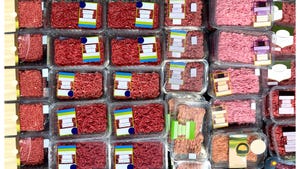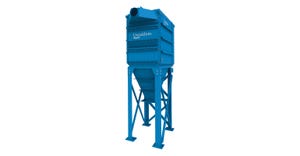Selecting Size Reduction Equipment
March 23, 2017

The efficiency of a piece of process equipment is only as good as its suitability for the application. Any salesperson has an obligation to promote his or her company's equipment, assuming it has the ability to meet a minimum threshold of capability for a given project. Consequently, equipment that is only marginally capable of doing the job often ends up being purchased. The buyer owes it to him or herself and the company he or she represents to be as diligent as possible when researching equipment options. The goal should be to find not just a machine that is marginally able to meet a threshold, but rather one that can achieve optimal performance.
In the case of size reduction equipment there are dozens of options to choose from. There will always be one ideal piece of equipment based on the nature of your product and sizing goals, but can you find it from the many of options available to you? Selecting a company that offers a wide range of equipment within the size reduction arena will give you the best opportunity to succeed. These companies are not married to one particular type of machine or technology and will therefore recommend the equipment best suited to your specific needs.
At Schutte-Buffalo, for example, we offer technologies that include high-impact milling, shredding, crushing, and de-agglomerating. When an application presents itself to us, we first evaluate the nature of the material and the goals of the customer, both in terms of desired output particle size and the hourly throughput requirement. If the material is fibrous or non-friable a shredding action will likely be required to reduce the particle size to the desired level. Materials that are highly friable, such as glass or ceramic, or an agglomerated chemical, can best be reduced in size by impact technologies such as a hammer mill or lump breaker.
When considering size reduction equipment purchases ask yourself if the companies you are considering offer a wide range of equipment styles and sizes to choose from. Do they supply only a few models from off-the-shelf or is the machine designed to meet your unique needs and production requirements? Are the materials of construction used in the machine well-suited to your material? Does the company offer integration with ancillary equipment to make your installation easier and more seamless? Lastly, and most importantly, does the company offer testing services to prove its capabilities on your material?
Finally, a word to the wise: Always be wary of any company that offers only one style or type of machine, perhaps in just a few sizes. While these companies may have the perfect machine and size for a few applications, chances are yours is not one of them. Consequently, the company may promote the machine it has in stock as being ideally suited to your needs when in fact it may not be. Always ask for references and examples of prior installations using the company’s equipment on similar products to yours. Doing your homework will insure that you will never be the victim of purchasing a square peg for a round hole.
Tom Warne is the former owner and president of Schutte-Buffalo Hammermill, and now serves in the role of director of sales since selling the company in 2014.
Click here for information about the PBS Toronto event, May 16-18, 2017
For related articles, news, and equipment reviews, visit our Size Reduction Equipment Zone
Click here for a List of Size Reduction Equipment Manufacturers
You May Also Like

